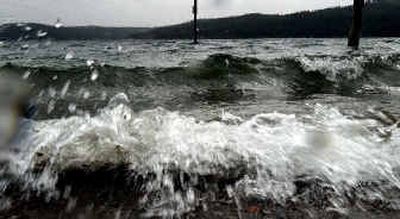DEQ wants money for Lake CdA plan

BOISE – If Idaho wants to get Lake Coeur d’Alene deleted from the Superfund list, it needs to fund a position at the state Department of Environmental Quality to implement a lake management plan, the DEQ director told lawmakers Tuesday.
“This is a critical position, to be located in the Coeur d’Alene regional office,” DEQ head Toni Hardesty told the Joint Finance-Appropriations Committee. “EPA will not proceed with delisting unless there is a joint state and tribal plan in place.”
The $85,900 budget request is the only increase the DEQ is seeking next year from state general tax funds, though the department also has a number of other positions it’s hoping to fund with federal grants and other funding sources.
“It would be problematic for us if they did not fund that,” Hardesty said after her budget presentation. “We’ve been trying to get this going since 2002.”
Sen. Shawn Keough, R-Sandpoint, JFAC vice chairwoman, said, “I can’t speak for the committee as a whole, but it would certainly seem as though for the north, it’s a priority.”
She added, “It’s kind of a crapshoot around here sometimes.”
Rep. Dick Harwood, R-St. Maries, who also serves on JFAC, said he’s against funding the position. “I’ve never been in favor of doing the lake ‘til we get the rest of it cleaned up,” Harwood said. “We need to get to the point source first.”
The additional staffer would manage implementation of the joint lake management plan, which the department’s budget request said the state and tribe “have not been able to finalize … due to uncertainty about funding and staffing.”
Gov. Dirk Kempthorne included the position in his recommended budget for next year, but lawmakers have been saying they may not be able to meet the governor’s spending targets.
Harwood said he’s undecided about the DEQ’s overall budget request. “We need to look at it a little bit,” he said.
The joint state-tribal lake management plan is intended to control the amount of nutrients that flow into the lake, to prevent further release of metals that are now encased in sediments in the bottom of the lake. When the lake management plan is implemented, EPA will remove the lake from the Superfund designation that covers the basin due to its contamination with heavy metals from a century of mining.
Keough said she hopes that not only the position, but also a series of other water-related projects in North Idaho will be funded next year, ranging from funding for study of the Rathdrum Prairie Aquifer to data collection on lake-level issues in Lake Pend Oreille. None of those projects are in the governor’s budget recommendation.
After hearing the DEQ’s budget request on Tuesday, JFAC heard from the Idaho Department of Water Resources, along with an update on efforts to resolve a southern Idaho water rights dispute that could mean a $100 million buyout of water rights. Keough said the critical southern Idaho water issue points out the need to also address North Idaho water issues, which she said “are as important to us.”
“We need to give equal funding and equal commitment to these issues, particularly if they’re looking for our support,” Keough said.
The governor’s recommended budget for the DEQ for next year includes spending $2.3 million in federal funds on the Coeur d’Alene Basin Commission’s basinwide cleanup efforts, which are part of a 30-year plan to clean up old mine wastes throughout the area.
The recommendation also calls for continuing a position added in May to the DEQ’s Coeur d’Alene regional office to provide regulatory oversight of the Burlington Northern Santa Fe railroad refueling depot. The company is funding the position for 10 years as part of its conditions of approval from the county to operate the refueling center, which sits right over the aquifer that provides the region’s drinking water.